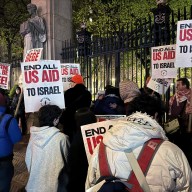Ken Livingstone is taking on the car — and he appears to be winning.
The London mayor was denounced five years ago when he introduced a congestion fee, requiring every vehicle entering the central core to pay for the privilege on weekdays.
There are no toll booths. Instead, hundreds of mounted cameras at boundary roads take photographs of licence plates. Drivers have until midnight that day to pay — online, by phone, at self-service kiosks or at shops and gas stations — and if they don’t, late fees are applied.
The zone where the congestion fee applies was expanded last year and, beginning in late October, large gas-guzzling cars and trucks will face a surcharge.
Currently, drivers must pay £8, or about $16, on the day they enter the zone. If they pay the next day, the charge goes up to £10, or about $20. After that, stiff penalties begin to accrue.
In an effort to reduce carbon emissions and encourage Londoners to take transit or switch to cleaner cars like hybrids, Livingstone plans a whopping £25 daily charge, about $50, for highly polluting vehicles to enter the central district.
Statistics from Transport for London show the congestion fee is working. Traffic entering the original zone fell instantly by 21 per cent. Crashes declined, smog decreased, and cycling rose.
Other cities have followed suit with similar fees or variations on the idea, including Stockholm, Milan and Berlin.
Perhaps the real test may come in May, when Livingston is up for re-election.
Will the voters back his bold initiatives — as they did in 2004, when he was easily returned to city hall, just a year after introducing the congestion fee?
















